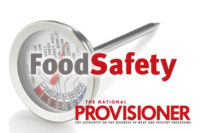Food safety intersects with food waste and traceability
Poultry is in the regulatory crosshairs — will this extend to beef and pork?

The National Provisioner recently asked Robert Ames, Director of Business Development, Meat Industry, for Corbion, about approaches to food safety. He shared the following insights:
- What role does food safety play in reducing food waste?
On the fresh side, the beef industry has been testing, holding and diverting pathogen positive products for years, and arguably that practice is a food-waste contributor. When you step back, however, you realize that we started out at E. coli O157:H7 rates above 1% and now, through dressing procedures and chemical interventions, have shrunk that number to below 0.3%. So, we’ve reduced what we waste and undoubtedly ship a microbially cleaner product through the channel. The same is true in cooked meats where food safety processes and ingredients have allowed us to manufacturer longer-lasting products. The bet is that wider selling windows reduce discards in the store or in the kitchen.
- In what ways can food safety help in building consumer trust and brand loyalty?
I don’t think it can. The absence of food safety destroys brands and tarnishes industries. I’m thankful to work in the meat industry where food safety professionals agree on this and work collaboratively across the competitive landscape. I’ve witnessed examples outside of our industry where food safety was seen as a competitive advantage and that seems short-sighted.
- How has Corbion’s research supported the development of its food safety solutions?
What success we’ve had is built on a tremendous, sustained effort to work with pathogens. We model them, conduct application studies with them, and of course mitigate them with technologies that we know will be fit for purpose in the meat industry. Most recently we have released a variable temperature function in our Corbion Listeria Control Model wherein users can anticipate the protection they have when products are temperature-abused. We didn’t do that without being very intentional about food safety being the space to spend our R&D effort.
- How does food safety intersect with processors’ product traceability efforts?
Many of your readers will be familiar with and are probably innovators with respect to lotting practices and how to create product separations that limit exposure, and so I see mostly an intercompany effort. USDA’s recently revealed Salmonella Framework is pointing at the grower stage and what can be done to mitigate risk before processing. Yes, poultry is in the crosshairs where integration and traceability are common. Will these expectations extend to beef and pork? I wouldn’t bet against it.
Looking for a reprint of this article?
From high-res PDFs to custom plaques, order your copy today!





.jpg?height=200&t=1733446179&width=200)


